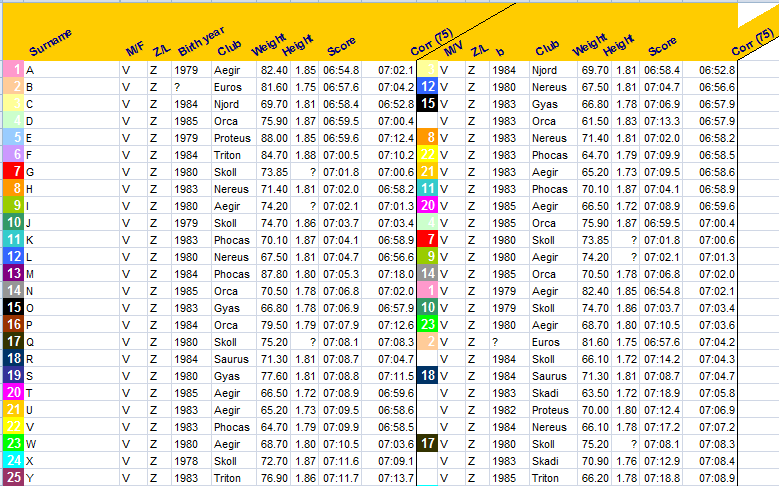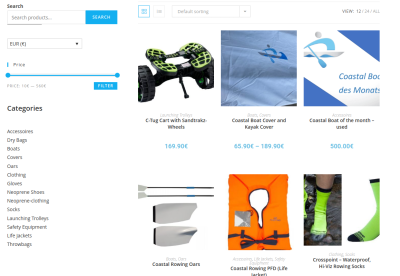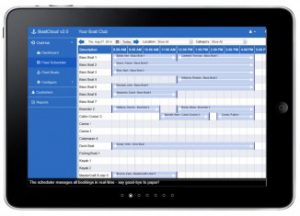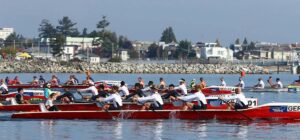It is the season for ergo testing and one of the issues coaches face is how to compare the scores of athletes whose body weights vary a lot. Is it “fair” to compare a 2k score for a 90kg man against a 75kg man?
The debate has been exhaustively reviewed and discussed here and here.
But there’s a fundamental underlying issue which is weight comparison. If you weigh more than me and we’re sitting on the water in single sculls – I have less load to heft down the race course than you do. So power to weight ratio is an important consideration in coaches’ selection criteria for crews.
The best selection is to use single sculls on water – assuming still water, no wind and athletes with perfectly matched bladework skills. On land, a Rowperfect 2k test willPosts produce scores that are aligned against on-water times and is weight-adjusted and boat class adjusted [if you are selecting an 8 set the test on the eights setting].
The Dutch coach Bert Cocu shared with me his spreadsheet for entering C2 scores and adjusting for weight. Note the sheet also has a athlete’s height column but that’s not included the formula

And here’s a sample set of data for women corrected back to a 75kg average weight. it shows the actual score and the adjusted score re-ranked by athlete (colour coded) in column ‘Corr (75)’.


This sheet is for heavyweight women; if you are coaching lightweights or heavy men, you’d need to adapt the formula to reflect the average crew weight of the athletes you’ve got in your squad.








This Post Has 11 Comments
But why would someone small row anyway. I’m
A tall heavyweight rower with a dream of being a gymnast. Will they make a “heavyweight” division for me? I think not.
Anyway, everyone knows ergs don’t float. See you on the water
Cheeky – small people have equal rights on the water! And some of my coxswains are quite good scullers too.
Surely single sculls favour lighter rowers, where the increase in wetted surface is greater for every extra kilo than in eights?
I just take a look at Valery Kleshnev’s rigging calculator on Biorow. He seems to be getting good correlation between weight, erg and on-water times.
I wonder how many athletes give up on Rowing when they are continually being hit with the height , weight and erg score attitude that exists in the sport. what actually counts is that they enjoy their sport and its their speed on the water that wins races not how tall or heavy they are ?
I started rowing at the end of Feb & I must admit I have been worried about height/erg scores since I started!
Actually, weight is reasonably important when comparing erg scores to prospective on water times. Consider, a 75 KG and a 100 KG rower with the same erg score. The 75 KG rower will be faster on the water. I have done a spreadsheet for our club that rationalized erg times to a normalized time considering weight and age so that masters (and high school/junior) rowers of all ages and weights can be evaluated dispassionately.
Of course, erg scores are only loosely correlated to actual on-water times. The erg score primarily measures rower power while on-water times are much more affected by technique. The usual example is in pairs rowing, where compatible pairs will out row other pairs that out erg them unless they have efficient pairs rowing technique. But this is true for all types of boats, where making a crew based on erg scores almost assuredly produces a slower boat than the most efficient lineup of rowers. The trick is in the coach figuring out just what is the most efficient lineup.
A heavier rower of equivalent fitness and technique will be faster on water than their lighter counterpart. This is why there are both lightweight and heavyweight classes, although lightweights get shortchanged in many regattas and at the world/Olympic level. Let’s hear it for more lightweight pairs competition!
Not sure what “N” is taking for breakfast but I’d like to find out as I can only wish I was putting 12kg on…
Concept 2 have had the formula for some time but has been revised.
http://www.concept2.com/indoor-rowers/training/calculators/weight-adjustment-calculator.
Russel,
I have seen this type of thing used in erg ladders in gyms as it can encourage rather than discourage people as it can create competiotion between a 75kg and 120kg athlete.
If you have a very good memory there was also a formula used in the superstars tv show which normalised the weight lifting o acount for body mass. Developed by Mike O’Carroll who was head of the school of mathematics at Teesside Polytechnic about 30 years ago 🙂
Martin – I would love to know what the Superstars formula was… I remember the TV show but not the algorithm!
David – I think this qualifies as understatement of the century “The trick is in the coach figuring out just what is the most efficient lineup.”…..!!!
Hi Rebecca
Found this
The O’Carroll Formula
i think the superstars one is on page 84
Helpful, Martin. Thanks. I’d forgotten about Superstars! The Handicapping Weight Lifters formula on p 84 is a good table of data.
The O’Carroll formula is what you want to search in Martin’s first link [in case it doesn’t work].